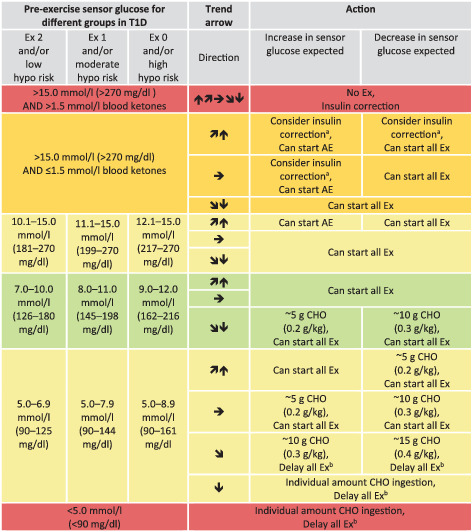TABLE 5.
Sensor glucose targets in advance to exercise in regard to different groups of children and adolescents with type 1 diabetes

|
Note: Sensor glucose targets are detailed for the following groups in type 1 diabetes (T1D): intensively exercising and/or low risk of hypoglycaemia (Ex 2); moderately exercising and/or moderate risk of hypoglycaemia (Ex 1), minimally exercising and/or high risk of hypoglycaemia (Ex 0).
When reaching the required sensor glucose level to start exercise, only consume carbohydrates again when the trend arrow is starting to decrease.
These recommendations are not applicable to hybrid closed‐loop systems.
Green shading, no/minimal action required; light‐yellow shading, minimal/moderate action required; dark‐yellow shading, moderate/intense action required; red shading, no/delay exercise.
AE, mild‐to‐moderate intensity aerobic exercise; CHO, carbohydrates; Ex, exercise; hypo, hypoglycaemia.
50% of regular insulin correction factor when sensor glucose is close to the upper glycaemic threshold.
Delay exercise until reaching at least 5.0 mmoL/L (90 mg/dL) and, ideally, from 7.0 mmoL/L to 10.0 mmoL/L (126 mg/dL to 180 mg/dL) or higher in those with an increased risk of hypoglycaemia accompanied by  ,
,  , or
, or 
